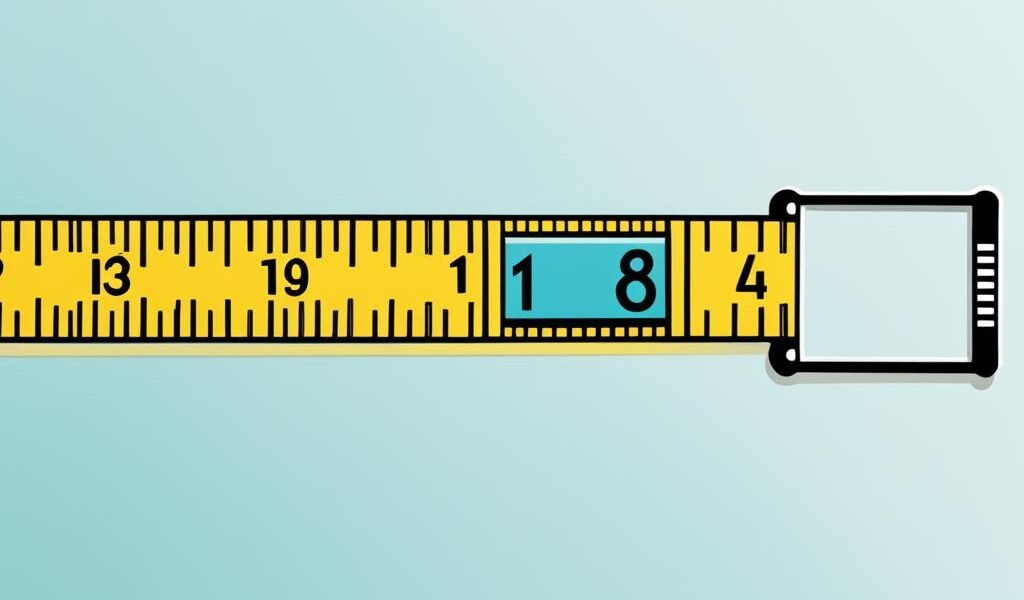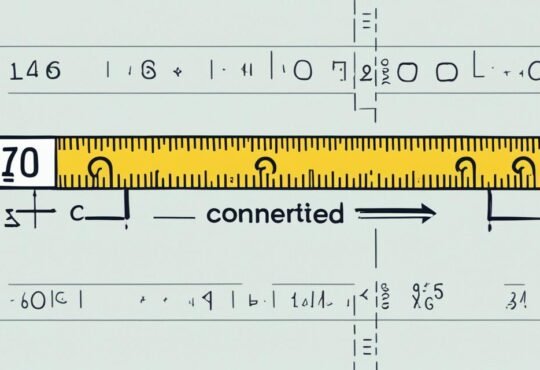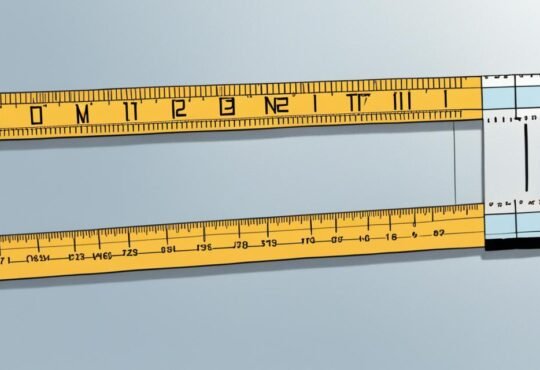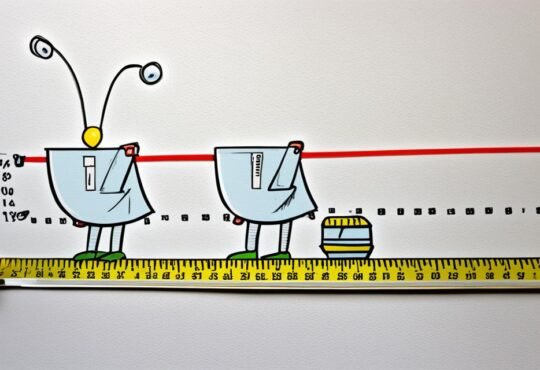
Convert 138cm to Meters – Quick & Easy Guide
Welcome to our quick and easy guide on how to convert 138cm to meters. Whether you’re working on a math problem or need to convert measurements for a project, this simple conversion process will have you covered. So, let’s dive in and learn how to convert 138cm to meters!
Contents
- 1 Understanding Centimeters and Inches
- 2 The Relationship between Centimeters and Meters
- 3 How to Convert from Cm to Meters
- 4 Tips for Sizing Jones Snowboards
- 5 Sizing Guidelines for Different Jones Snowboard Models
- 6 How to Size the Jones Flagship Snowboard
- 7 Conclusion
- 8 FAQ
- 8.1 How do I convert 138cm to meters?
- 8.2 How do I convert centimeters to inches?
- 8.3 What is the relationship between centimeters and meters?
- 8.4 How do I convert centimeters to meters?
- 8.5 How do I choose the right size Jones snowboard?
- 8.6 What are the sizing guidelines for different Jones snowboard models?
- 8.7 How do I size the Jones Flagship snowboard?
Key Takeaways:
- To convert centimeters (cm) to meters (m), simply divide the number of centimeters by 100.
- For example, 138cm divided by 100 equals 1.38 meters.
- Understanding the relationship between centimeters and meters is crucial for accurate conversions.
- Remember, 1 centimeter is equal to 1/100 of a meter.
- By following this simple process, you can easily convert 138cm to meters and tackle any measurement conversion task with confidence!
Understanding Centimeters and Inches
Centimeters (cm) and inches (in) are both commonly used units of length. 1 centimeter is equivalent to 0.393701 inches, while 1 inch is equal to 2.54 centimeters. To convert from centimeters to inches, you can use the conversion factor of 0.393701.
To convert 138cm to inches, you multiply 138 by 0.393701, resulting in 54.33 inches.
| Centimeters (cm) | Inches (in) |
|---|---|
| 1 cm | 0.393701 in |
| 138 cm | 54.33 in |
Keep in mind:
- 1 centimeter is approximately 0.4 inches.
- 1 inch is approximately 2.5 centimeters.
- To convert from centimeters to inches, multiply the number of centimeters by 0.393701.
- To convert from inches to centimeters, multiply the number of inches by 2.54.
“The conversion between centimeters and inches is straightforward once you know the conversion factor. Simply multiply the number of centimeters by 0.393701 to get the corresponding measurement in inches.”
Now that you understand the relationship between centimeters and inches, you can easily convert measurements from one unit to another. This knowledge is valuable when working with different measurement systems or when shopping for products that use different units of length.
The Relationship between Centimeters and Meters
In the metric system, the relationship between centimeters and meters is defined by their respective measurements. A centimeter is equal to 1/100 of a meter, making it a smaller unit of measurement. This is important to understand when converting centimeters to meters or vice versa.
To convert from centimeters to meters, you can use the cm to m conversion formula by dividing the number of centimeters by 100. This will give you the equivalent measurement in meters. For example, if you have 138 centimeters, by dividing it by 100, you get 1.38 meters.
Similarly, a millimeter is even smaller than a centimeter, as it is 1/1000 of a meter. On the other hand, a kilometer is much larger, as it equals 1000 meters. These different units of length are all part of the metric system, which provides a standardized way of measuring distance. Understanding these relationships is crucial for accurate conversions.
“The relationship between centimeters and meters highlights the precision and consistency of the metric system. By dividing or multiplying by factors of 10, you can easily convert between these units of length, making measurement conversions quick and efficient.”
The Centimeter and Meter Definitions
Before we proceed further, let’s define the centimeter and meter to have a better understanding:
| Unit | Definition |
|---|---|
| Centimeter | The centimeter (cm) is a unit of length in the metric system. It is equal to 1/100 of a meter, making it a smaller unit of measurement. |
| Meter | The meter (m) is the fundamental unit of length in the metric system. It is defined as the distance traveled by light in a vacuum during a specific fraction of a second. |
Now that we have defined the centimeter and meter, let’s move on to Section 4, where we will discuss how to convert centimeters to meters using a simple formula.
How to Convert from Cm to Meters
Converting centimeters to meters is a simple process that can be done using a formula or with the help of an online calculator or conversion chart.
To convert centimeters to meters, you can use the following formula:
Measurement in meters = Measurement in centimeters / 100
This formula involves dividing the number of centimeters by 100 to obtain the equivalent measurement in meters. For example, if you have a measurement of 138cm, you can divide it by 100 to get 1.38 meters.
If you prefer a more convenient method, you can use an online calculator or refer to a conversion chart. These tools provide quick and accurate conversions between centimeters and meters without the need for manual calculations.
Here is an example of a conversion chart:
| Centimeters (cm) | Meters (m) |
|---|---|
| 100 | 1 |
| 200 | 2 |
| 300 | 3 |
| 400 | 4 |
| 500 | 5 |
By using this conversion chart, you can easily determine the equivalent meter measurement for any given centimeter value.
So, whether you prefer the manual formula or the assistance of online tools and conversion charts, converting centimeters to meters can be a quick and hassle-free process.
Tips for Sizing Jones Snowboards
When it comes to choosing the right size snowboard, there are several factors to consider. Jones snowboards are designed with specific board shapes and intended uses in mind, which means that sizing can vary depending on your needs. To help you find the perfect fit for your snowboarding adventures, here are some valuable tips:
Rider Characteristics
Prior to selecting a snowboard, consider your weight, height, and boot size. These factors play a crucial role in determining the appropriate snowboard length and width for optimal performance. Jones provides a comprehensive snowboard size guide that takes these considerations into account. By referencing this guide, you can ensure that you choose the right size board to match your unique characteristics.
Board Shape and Riding Style
Different board shapes excel at different riding styles. Jones offers a variety of boards, including Directional Freeride and Directional Twin models. Understanding the intended use of each board shape is key to selecting the right size. For example, Directional Freeride boards are typically sized based on weight and boot size, while Directional Twin boards can be ridden shorter. By aligning your riding style with the appropriate board shape, you can enhance your overall snowboarding experience.
Consult the Jones Sizing Guidelines
Jones provides specific sizing guidelines for each snowboard model they offer. These guidelines take into account the board’s shape, intended use, and rider specifications. By consulting the Jones snowboard size guide, you can make an informed decision and select the right size snowboard that matches your requirements. This ensures optimal performance and maximizes your enjoyment on the slopes.
Remember, finding the perfect snowboard size is crucial for your comfort, control, and overall performance on the mountain. Take the time to consider your characteristics, board shape, and consult the Jones sizing guidelines. By doing so, you’ll be well-equipped to hit the slopes with confidence and shred like a pro!
| Board Model | Recommended Sizing |
|---|---|
| Directional Freeride | Based on weight and boot size |
| Directional Twin | Can be ridden shorter |
| Hovercraft 2.0 | Ride 3-6 cm shorter than traditional snowboard |
| Storm Chaser | Ride 6-13 cm shorter than traditional snowboard |
| Ultralight Butterfly Split | Sized the same as solid version |
| Mind Expander Twin | Sized like a directional twin park board |
Sizing Guidelines for Different Jones Snowboard Models
Each Jones snowboard model has its own recommended sizing guidelines. It’s important to follow these guidelines to ensure optimal performance on the slopes. Here are some examples:
Hovercraft 2.0
The Hovercraft 2.0 is designed to be ridden 3-6 cm shorter than your traditional snowboard. This shorter length allows for increased maneuverability and control, making it ideal for navigating tight trees and deep powder.
Storm Chaser
The Storm Chaser should be ridden 6-13 cm shorter than your regular snowboard. This shorter length, combined with a wider waist and swallowtail design, enhances floatation and stability in deep snow conditions.
Ultralight Butterfly Split
The Ultralight Butterfly Split can be sized the same as the solid version. This ultra-lightweight splitboard offers the same performance benefits as the solid board, making it perfect for backcountry exploration.
Mind Expander Twin
The Mind Expander Twin should be sized like a directional twin park board. This versatile board is designed for park and freestyle riding, offering a playful and responsive feel on all types of terrain.
Below is a sizing chart summarizing the recommended sizes for Jones snowboards:
| Snowboard Model | Recommended Sizing Range (cm) |
|---|---|
| Hovercraft 2.0 | 3-6 shorter than traditional length |
| Storm Chaser | 6-13 shorter than regular length |
| Ultralight Butterfly Split | Same as the solid version |
| Mind Expander Twin | Sized like a directional twin park board |
By following the specific sizing recommendations for each Jones snowboard model, you can ensure that you are riding the right size board for your preferred style and terrain.
How to Size the Jones Flagship Snowboard
The Jones Flagship is a high-performance snowboard designed for advanced riders who crave precision and control on the slopes. Choosing the right size Flagship is crucial to ensure optimal performance and a great riding experience. To determine the ideal sizing for your Flagship, consider factors such as rider weight, boot size, and personal preferences. By consulting the Flagship snowboard size chart provided by Jones, you can make an informed decision and find the perfect fit for your riding style.
Flagship Snowboard Size Chart
Referencing the Flagship snowboard size chart is the first step in finding the right size board for you. Here is an example of the size chart:
| Rider Weight (lbs) | Board Length (cm) |
|---|---|
| 110-140 | 151 |
| 120-150 | 154 |
| 130-160 | 157 |
| 140-170 | 160 |
| 150-190 | 162 |
| 160-200 | 165 |
| 170-210 | 169 |
Using the Flagship snowboard size chart, locate your weight range and corresponding board length. Keep in mind that this is a general guideline, and personal preferences may vary. If you are in between sizes, consider factors such as your riding style, preferred terrain, and desired level of maneuverability.
It is also important to note that the Flagship comes in different width options, catering to various boot sizes. If you have larger feet, you may prefer a wider board to prevent toe and heel drag.
When choosing the right size Flagship snowboard, remember that a board that is too long may feel cumbersome and less maneuverable, while a board that is too short may lack stability and control at higher speeds. Finding the perfect balance is key to unlocking the full potential of this powerful snowboard.
Once you have determined the appropriate board length and width based on the size chart and your personal preferences, you will be ready to hit the slopes with confidence and enjoy all the performance features that the Jones Flagship has to offer.
Conclusion
In conclusion, understanding how to convert centimeters to meters and selecting the right size snowboard are crucial for a successful snowboarding experience. By following the conversion factors and sizing guidelines provided by Jones, you can ensure accurate measurements and choose the perfect snowboard for your needs.
Converting centimeters to meters is a simple process of dividing by 100, while converting from centimeters to inches involves multiplying by 0.393701. These conversions allow you to easily work with different units of length and make accurate measurements.
When it comes to choosing the right size snowboard, factors such as rider weight, height, boot size, and riding style play a significant role. Following the specific sizing recommendations for each Jones snowboard model will help you find the perfect fit for optimal performance on the slopes.
By understanding the conversion factors and sizing guidelines, you can confidently convert measurements and select the right size snowboard. These guidelines will empower you to make informed decisions and ensure a fantastic snowboarding experience every time. So get out there, hit the slopes, and enjoy the ride!
FAQ
How do I convert 138cm to meters?
To convert 138cm to meters, you divide 138 by 100, resulting in 1.38 meters.
How do I convert centimeters to inches?
To convert centimeters to inches, you can multiply the number of centimeters by 0.393701.
What is the relationship between centimeters and meters?
A centimeter is 1/100 of a meter, which means that to convert from centimeters to meters, you divide by 100.
How do I convert centimeters to meters?
To convert centimeters to meters, you divide the number of centimeters by 100.
How do I choose the right size Jones snowboard?
Consider factors such as rider weight, height, boot size, and intended use. Consult the specific sizing guidelines provided by Jones for each snowboard model.
What are the sizing guidelines for different Jones snowboard models?
Each Jones snowboard model has its own recommended sizing guidelines. Consult the specific sizing recommendations for each model to ensure optimal performance.
How do I size the Jones Flagship snowboard?
The ideal size for the Jones Flagship snowboard depends on factors such as rider weight and boot size. Consult the Jones snowboard size chart and consider your own preferences and riding style when selecting the right size Flagship snowboard.







